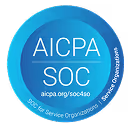Effective resource allocation is critical for the success and sustainability of any organization. It involves strategic planning and distribution of resources, such as time, money, personnel, and technology, to optimize performance and achieve objectives. Organizations can enhance productivity, reduce waste, and maintain a competitive edge by ensuring that resources are allocated efficiently. Exploring the benefits of resource allocation alongside a step-by-step guide and best practices can empower businesses to make informed decisions that drive growth and innovation.
Effective resource allocation is critical for the success and sustainability of any organization. The ability to strategically distribute resources—be it time, money, personnel, or technology—can significantly influence your outcomes. Organizations can enhance productivity, reduce waste, and maintain a competitive edge by ensuring that resources are allocated efficiently.
Let us delve into how effective resource allocation can transform your organization by exploring its benefits, key implementation steps, and best practices to enhance efficiency, optimize performance, and reach strategic objectives.
What is resource allocation?
Resource allocation is the strategic process of distributing available resources—such as time, labor, capital, and materials—across various projects, tasks, or departments within an organization. The aim is to optimize efficiency and achieve specific goals. Through effective resource allocation, businesses can balance workloads, minimize waste, and ensure crucial operations receive the necessary support.
It involves assessing needs, setting priorities, and making informed decisions to ensure resources are used where they are most impactful. Proper resource allocation is vital for maximizing productivity, enhancing profitability, and maintaining a competitive edge in the marketplace.
Steps to implement resource allocation
Implementing resource allocation effectively is a foundational aspect of organizational success, ensuring that every asset, from personnel to finances, is utilized to its fullest potential. The importance of following a structured set of steps cannot be overstated, as it helps create a clear roadmap for decision-making and prioritization.
Adhering to these critical steps allows organizations to seamlessly align resources with strategic objectives, minimize waste, and adapt to changes with agility. Understanding and executing these steps is paramount to achieving optimal performance and driving sustainable growth in a competitive landscape.
1. Define project goals and gather requirements
Start by clearly defining the project objectives and key deliverables. Outline what needs to be achieved and gather detailed requirements. This foundational step ensures that all stakeholders have a shared understanding of the project’s scope, paving the way for effective resource planning.
2. Identify and assess available resources
Conduct an assessment to identify the resources at your disposal, including personnel, equipment, materials, and budget. Evaluate the skills and strengths of your team members. Understanding the full range of available resources lets you plan effectively and allocate them where they are most needed.
3. Prioritize tasks and allocate resources
Rank tasks based on their importance and urgency. Develop a plan that allocates resources to these tasks, ensuring alignment with project milestones. Use tools like Gantt charts to visualize allocations. Prioritizing tasks helps focus resources on critical path activities that impact project success.
4. Implement resource assignments
Assign resources to tasks, ensuring that you consider availability and task compatibility. Be mindful of balancing workloads to prevent overallocation. Effective implementation of resource assignments requires clear communication and coordination among team members to ensure all are aligned with the project plan.
5. Monitor, control, and adjust allocations
Track resource utilization and project progress using project management software. Regularly monitor for signs of overuse or inefficiencies. Be prepared to adjust allocations as needed to respond to changes or unexpected challenges. Regular monitoring helps you stay on track and adapt as the project evolves.
6. Review and evaluate resource allocation
Once the project is completed, conduct a comprehensive review of the resource allocation process. Analyze what strategies were successful and where improvements can be made. Gathering feedback allows you to refine your approach to resource allocation in future projects, promoting continuous improvement.
Best practices in resource allocation
Adhering to best practices can significantly impact an organization's ability to achieve its goals efficiently and effectively. These practices provide a framework for decision-making that ensures resources are deployed in the most strategic manner, minimizing waste and maximizing output.
Embracing these principles not only streamlines operations but also empowers teams to respond proactively to challenges, ultimately driving sustained success in a dynamic business environment.
Use of project management tools
Effective resource allocation is crucial for maximizing project efficiency and success. One of the best practices is the use of project management tools, which streamline resource management by providing a centralized platform for tracking tasks, deadlines, and team responsibilities.
These tools offer features such as Gantt charts, time tracking, and workload distribution, which help managers visualize project timelines and allocate resources optimally. By facilitating real-time collaboration and communication, project management tools enable teams to quickly adapt to changes and ensure that resources are used efficiently, ultimately leading to successful project completion on time and within budget.
Rocketlane's resource management capabilities are designed to streamline resource allocation, ensuring optimal use of time and talent. It helps teams deliver successful outcomes consistently by maximizing project efficiency.
Clear communication among teams
Clear communication among teams is crucial for effective resource allocation. It ensures that all team members have a shared understanding of project goals, timelines, and resource needs. This transparency helps prevent overlaps, omissions, and misallocation by aligning team efforts.
Regular updates and open channels for feedback facilitate quick adjustments and promote efficient use of resources. Employing tools like project management software can further enhance communication by providing central access to schedules and task assignments. By fostering an environment where information flows freely, organizations can improve coordination and ultimately achieve more with the resources at their disposal.
Regular monitoring and adjustments
Regular monitoring and adjustments are crucial for effective resource allocation. Continuously assessing resource deployment enables organizations to identify inefficiencies and areas for improvement. Regular check-ins allow teams to adapt to changing circumstances, ensuring that resources are aligned with current goals.
Utilizing performance metrics and feedback loops helps in pinpointing where adjustments are needed, preventing resource waste and maximizing productivity. This iterative process not only enhances operational efficiency but also supports agile decision-making.
Who’s responsible for resource allocation?
Resource allocation is typically a responsibility shared among various roles and levels within an organization, depending on its structure and size. Here are the key roles often involved in resource allocation:
1. Executives and senior management
They set the strategic direction and priorities of the organization, making high-level decisions about where resources (such as budget, personnel, and capital) should be focused.
2. Project managers
In the context of projects, they are responsible for allocating resources to ensure project objectives are met. They determine how to distribute project resources like team members, time, and materials, often working within the constraints set by senior management.
3. Department heads and managers
These individuals manage the resources within their specific departments. They allocate operational resources, such as staff time and department budgets, to meet their goals.
4. Resource managers
In larger organizations, there might be dedicated resource managers who oversee the distribution and assignment of resources, ensuring that resources are utilised efficiently across multiple projects and departments.
5. Finance teams
They often play a key role in budget allocation, ensuring that financial resources are distributed in alignment with the organization’s priorities and financial goals.
6. HR departments
In terms of human resources, HR departments may help with the allocation of personnel, by handling hiring, training, and staffing processes to meet the organization’s workforce needs.
The benefits of effective resource allocation
Effective resource allocation is a powerful driver of organizational success, offering a multitude of benefits that enhance overall performance. Strategically aligning resources with key objectives helps organizations significantly boost productivity, reduce costs, and improve project outcomes. This approach ensures that every asset, from human capital to financial investments, is utilized efficiently, fostering innovation and competitive advantage.
Effective resource allocation also enables organizations to quickly adapt to changing conditions, mitigate risks, and confidently seize new opportunities.
Maximizes efficiency
Effective resource allocation plays a crucial role in maximizing efficiency within an organization. Through strategic distributing of resources—such as time, labor, and financial assets—companies can streamline operations and ensure that each department functions optimally. This targeted approach reduces waste, minimizes redundancies, and ensures tasks are completed in a timely manner.
As a result, employees can focus more on core activities that drive growth and innovation rather than being bogged down by resource constraints. Ultimately, efficient resource allocation leads to quicker project cycles, improved productivity, and enhanced profitability, fostering an environment where both the business and its employees can thrive.
Fosters collaboration
Effective resource allocation fosters collaboration by ensuring that team members have clear roles and access to the necessary tools and support to achieve common goals. When resources are distributed efficiently, it promotes transparency and accountability, creating an environment where team members are encouraged to share ideas and expertise.
This structured approach reduces duplication of efforts and helps build trust among team members as they work together, knowing that everyone's contributions are aligned and valued. Through open communication and coordinated action, effective resource allocation enhances problem-solving capabilities and drives innovation, ultimately leading to more successful project outcomes.
Increases your agency’s profit margins
Effective resource allocation significantly boosts an agency's profit margins by ensuring that resources such as time, money, and personnel are used optimally. Agencies can reduce waste and increase efficiency by strategically assigning tasks and distributing resources where they are most needed. This approach minimizes operational costs while maximizing output, leading to higher productivity without the need for additional investment.
Well-planned resource allocation enables the agency to complete projects on time and within budget, enhancing client satisfaction and potentially leading to repeat business. Over time, these factors converge to create a substantial improvement in profit margins and overall financial health.
Boosts client satisfaction
Efficient resource allocation plays a crucial role in boosting client satisfaction by ensuring that projects are delivered on time and within budget. With effective resource allocation, businesses can improve project quality and reduce delays, leading to enhanced customer experiences.
Clients appreciate timely updates and consistent communication, both of which are made possible through clear and effective allocation of resources. Furthermore, when resources are aligned with project goals, companies can address client needs more accurately, resulting in products or services that better meet expectations. This fosters trust and loyalty, making clients more likely to return or provide positive referrals.
Common challenges in resource allocation
Navigating the complexities of resource allocation presents several common challenges that organizations must address to ensure effective management and strategic alignment. Recognizing and addressing these challenges is essential for optimizing resource use, maintaining agility, and fostering a collaborative environment that supports organizational objectives. Here are some common challenges you might face in resource allocation:
Over or under-allocation
One of the prevalent challenges in resource allocation is the tendency towards over or under-allocation. Over-allocation occurs when resources, whether human, financial, or material, are stretched beyond their capacity. This often results in burnout, reduced productivity, and compromised quality.
In contrast, under-allocation can lead to resource idleness, missed opportunities, and inefficiencies. Both scenarios stem from inaccurate forecasting, poor planning, or lack of real-time data.
Addressing these issues requires implementing advanced project management tools and techniques, which facilitate ongoing analysis and adjustments. Achieving a balanced allocation ensures optimal utilization, helping organizations to maintain efficiency and meet objectives effectively.
Dealing with resource shortages
Dealing with resource shortages is a critical aspect of effective resource allocation in any organization. Shortages can arise due to unexpected demand spikes, budget constraints, or disruptions in the supply chain.
To manage these challenges, it's essential to prioritize tasks and projects, focusing on those that align closely with organizational goals. Utilizing data-driven forecasting tools can help predict resource needs more accurately, minimizing unexpected shortfalls.
Fostering strong supplier relationships can also enhance flexibility and responsiveness. Encouraging cross-training within teams can also mitigate the impact of staffing shortages, ensuring that essential operations continue smoothly even when resources are scarce.
Time constraints and deadlines
Time constraints and deadlines are prevalent challenges in resource allocation, often dictating the pace and priorities of projects. When timelines are tight, teams may struggle to distribute resources effectively, leading to rushed work and potential oversights.
Balancing urgent tasks against long-term goals becomes crucial, requiring meticulous planning and communication. Deadlines, while essential for maintaining progress, can create additional stress, impacting productivity and quality.
Efficient time management strategies, such as setting clear milestones and regularly reassessing priorities, are vital to overcoming these challenges. By effectively managing time constraints, organizations can enhance their ability to allocate resources optimally and achieve desired outcomes.
How to manage resources
A structured approach to resource management enables organizations to optimize their use of time, talent, and funds. Key steps include setting clear priorities, which ensures that resources are aligned with strategic goals and critical projects. Regular monitoring and evaluation are essential to track resource utilization, allowing for timely adjustments and improved efficiency.
Effective communication and collaboration across teams enhance transparency and foster a cooperative environment. With the help of these strategies, organizations can drive productivity, reduce waste, and adapt swiftly to new challenges, paving the way for sustainable success.
1. Resource planning
Effective resource planning begins with a comprehensive overview of the project’s needs. Identify all necessary resources, such as personnel, technology, budget, and materials. Create a detailed resource plan that outlines how these resources will be allocated throughout the project lifecycle. Using software tools like Rocketlane can help effectively map out this plan.
2. Prioritization
Successful resource management involves prioritizing tasks and goals based on the project's importance and deadlines. Ensure that critical resources are allocated to high-priority tasks to maximize efficiency. Manage the team's capacity carefully to avoid overloading any team member while also avoiding underutilization of talents.
3. Flexibility
Being adaptable is key to managing resources effectively. As project demands change, be prepared to adjust resource allocation, which may include reallocating team members or modifying schedules. Implement cross-training where feasible to ensure team members can cover multiple roles, enhancing flexibility in resource allocation.
4. Communication
Maintain open lines of communication with your team regarding resource availability, issues, and progress. Provide regular updates and foster an environment where team members feel comfortable sharing their concerns. Transparency is vital in building a responsive and cohesive team dynamic.
5. Monitoring and evaluation
Continually track progress and evaluate resource efficiency throughout the project. Utilize project management tools to monitor resource usage and make adjustments as necessary. Regular evaluations can identify areas for improvement, helping in optimizing resource allocation.
Setting client expectations
Setting client expectations effectively is a cornerstone of successful client relationships and project management. Clear and open communication from the outset helps establish mutual understanding and trust between service providers and clients. Here are some ways you can set the right expectations with your clients.
Clear communication
Begin setting client expectations through discussions that clearly outline the project scope, timeline, and any potential limitations. Document agreements in contracts, project charters, or statements of work to ensure all parties mutually understand the project objectives and deliverables.
Realistic timelines
Provide clients with realistic timeline estimations based on resource availability and past project experiences. Incorporate time buffers to accommodate potential delays and ensure the proposed schedule is feasible, given the resources at hand.
Ongoing communication
Establish regular check-ins or progress reports to keep clients informed about the project's status. If changes to the project scope, budget, or timeline occur, communicate these changes promptly and transparently to maintain trust and collaboration.
Managing changes
Implement a change control process to handle any client-requested changes. Educate clients on how changes can impact the project, including potential effects on costs and timelines. This process helps maintain control over the project while accommodating client needs.
Deliver on promises
Once expectations are set, endeavor to meet them diligently. Consistency in delivering promised outcomes fosters client trust and strengthens the relationship. Ensure that deliverables meet the quality standards agreed upon from the outset of the project.
Feedback loop
Encourage client feedback throughout the project's duration to ensure alignment and satisfaction. Use this feedback to make necessary adjustments, which helps in delivering results that meet or exceed client expectations.
Effortlessly manage resource allocation with Rocketlane
Effortlessly managing resource allocation with Rocketlane enables organizations to streamline operations and enhance project efficiency. Rocketlane provides intuitive tools and features that simplify the complex process of distributing resources, ensuring they are aligned with strategic priorities and project requirements. Here’s how it makes the process smoother and more effective:
Real-time centralized access
Rocketlane provides a single platform for tracking resource availability in real time. This ensures everyone has access to accurate, up-to-date data, helping teams make informed decisions without relying on outdated spreadsheets or manual processes.
Actionable analytics and reporting
The platform’s robust reporting and analytics features allow you to track resource utilization and identify inefficiencies. With clear visibility into bottlenecks or underutilized resources, teams can quickly make adjustments to maximize productivity and keep projects on track.
Collaborative resource management
Rocketlane fosters collaboration among stakeholders, enabling them to share updates and provide input on resource allocation. This inclusive, transparent approach ensures that decisions are made strategically, leading to more efficient and balanced resource distribution.
Resource AI
Rocketlane’s Resource AI adds an extra layer of intelligence to resource management. It automatically matches the right people to the right projects by analyzing key factors like skills, availability, and workload. Resource AI also helps optimize for business goals such as profitability and utilization, making sure your resources are always allocated efficiently. Plus, it provides real-time insights into how decisions impact performance and profitability, allowing for swift adjustments.
Say goodbye to rushed resource allocations and avoid delayed project timelines by switching to Rocketlane. Experience seamless and efficient resource management. Take a demo with us today!
{{demo}}
FAQs
1. What is resource allocation in project management?
Resource allocation is the process of assigning available resources, such as manpower, materials, equipment, and budget, to various tasks and activities in a project. It ensures that the right resources are available at the right time to achieve project objectives efficiently.
2. Why is resource allocation important for organizations?
Resource allocation is crucial as it ensures optimal use of resources, preventing bottlenecks and resource shortages. It enhances productivity, reduces project costs, and improves the likelihood of meeting deadlines and achieving project objectives.
3. What are the primary benefits of effective resource allocation?
Effective resource allocation leads to improved efficiency, increased project success rates, better management of project costs, enhanced team productivity, and the ability to respond swiftly to changes in project demands.
4. What steps are involved in the resource allocation process?
The resource allocation process typically involves identifying project requirements, assessing available resources, prioritizing tasks, assigning resources to tasks, monitoring resource usage, and adjusting allocations as necessary to address project changes or conflicts.
5. How can organizations prioritize tasks during resource allocation?
Organizations can prioritize tasks based on factors such as project deadlines, task dependencies, resource availability, and the overall impact of tasks on project objectives. A clear prioritization strategy helps in efficiently directing resources to critical tasks.
6. What are some common challenges in resource allocation?
Common challenges include resource shortages, inefficient utilization, over-allocation of resources, project scope changes, and conflicts between project teams over resource needs. Addressing these challenges requires careful planning and monitoring.
7. How does technology aid resource allocation?
Technology aids resource allocation through tools and software that provide real-time data on resource availability, facilitate scheduling, enable scenario analysis, and offer reporting features for better decision-making and adjustments in resource planning.
-min.webp)











